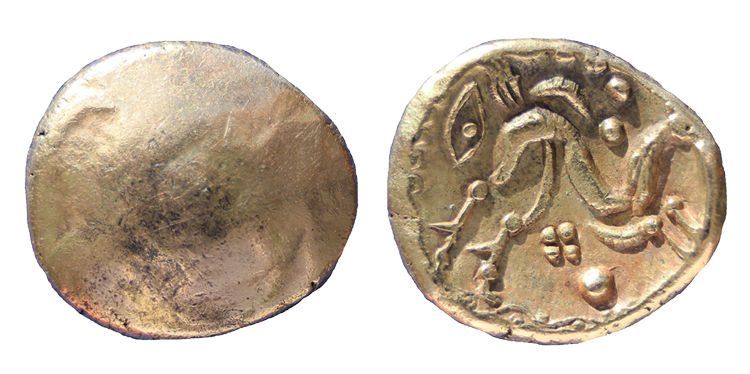
Modern Forgeries
(Info)
The Situation in 2017
Insert Content
The discussion from Celtic Coinage of Britain 1989
Prior to 1960, modern forgeries – ones intended to deceive collectors – had not been a problem. One false stater made from a bronze alloy, carrying a reverse of 50-01 and an obverse of 1736-01, appeared in 1929. It is difficult to explain such a piece, but a modern origin is as likely as an ancient one. The coin now resides in the Museum of the American Numismatic Society.
Early in 1961, however, the picture changed. A "hoard", supposedly found by a farmer between Guildford and Haslemere in 1944, appeared on the market. The farmer had hidden the coins but now wanted to sell them and the lot was quickly dispersed. Over the next few years, about 150 gold staters of the Gallo-Belgic E, Gallo-Belgic X and Whaddon Chase types were sold.
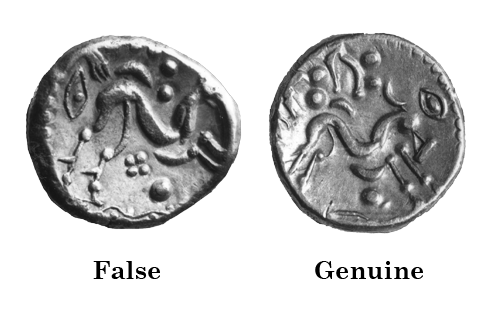
The coins all had a strange appearance, but an ingenious theory explained this. The coins must have been the work of an ancient forger who never managed to place his forgeries into circulation.
During the next twenty years, additional coins were offered – and all had the same unusual appearance. A hoard of Chute staters appeared in the early 1970s. By the late 1970's, however, suspicions were raised about the Haslemere hoard, and opinion was divided as to its authenticity. Haselgrove mentioned the controversy in his 1978 Gazetteer.
By 1984, the forgery was exposed, and evidence was offered in the form of die-cutting and metallurgical analyses (132). The forgeries were unlike ancient coins and must have been the work of a modern forger.
The forger, an inept die-cutter, was an incompetent metal worker as well. The coins, supposedly struck over a hundred-year period, all contained the same die-cutting error. Furthermore many different types were made from the same alloy – too many to be restrikes.
The full die-cutting and metallurgical evidence cannot be published until the forger is apprehended. At the time of writing, his identity is not known.
The Haslemere forgeries may be detected easily – once you know the identifying points. The primary means of detection lies in the die-cutting on the curves of the design. The forger was unable to cut smooth curves with a single stroke, as a Celtic craftsman did. Instead, he cut the curves with a series of hammer-blows to the graver, and these produced "steps" on their sides. The steps can be seen with a 14x magnifying glass: one with good optical properties, such as the Bausch and Lomb Hastings Triplet, catalogue number 81-61-75.
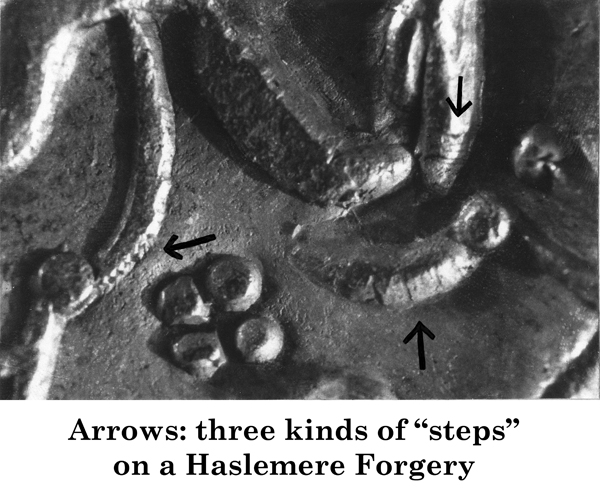
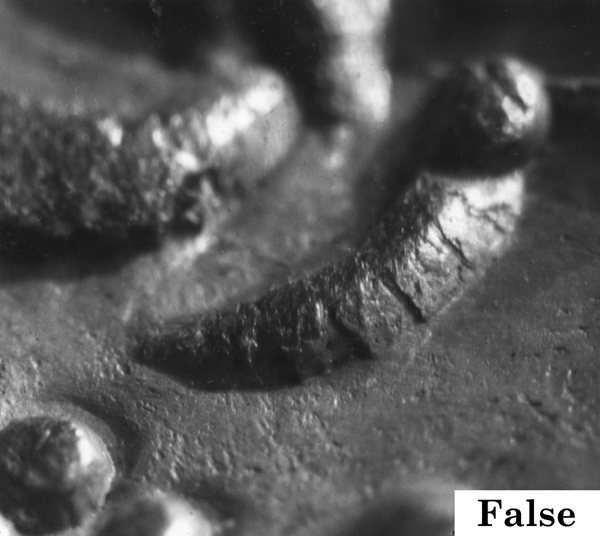
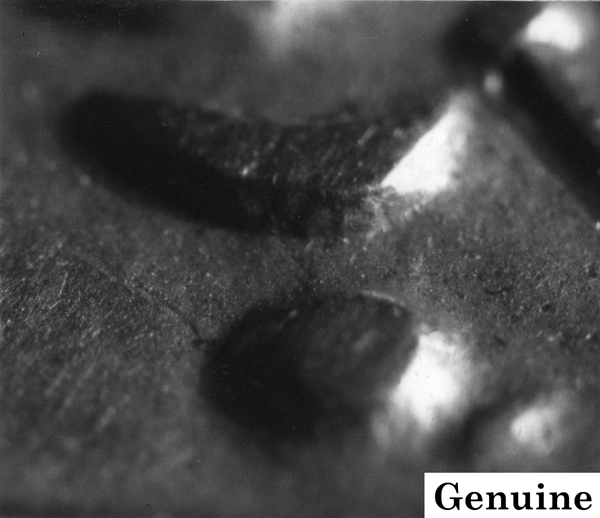
The forger often recut his dies to create new types. Thus, much of his output is die-linked, and coins linked to those published here may be assumed to be false.
A few silver forgeries are known, and these are all illustrated. There are a few false gold staters which are not illustrated – all have pronounced steps and are easily detected. The coins lacking illustrations are:
- An example of 10-01F same obverse die, but a new reverse.
- Two examples of 33-01F, with the reverse die recut. One adds a pellet below the lyre, the second has the pellet changed to a line.
- Several examples of 87-01F, same reverse die, but new obverses.
- 210-01F, 236-01F, 610-01F, 626-09F, a variety of 626-09F, 829-01F and 1635-01F.
In 1985, another forger produced copies of Durotrigan silver staters (1235-01), apparently cast. The coins are easily recognized by the unsharp images and the rough fields (See article about these forgeries).
In 1988, a few struck forgeries have appeared. The coins display a poor style, and the numismatic trade quickly condemned the pieces. The types included a fantasy Dobunnic quarter stater, and forgeries of 353-05, 407-01, 467-01 and 2027-01.
